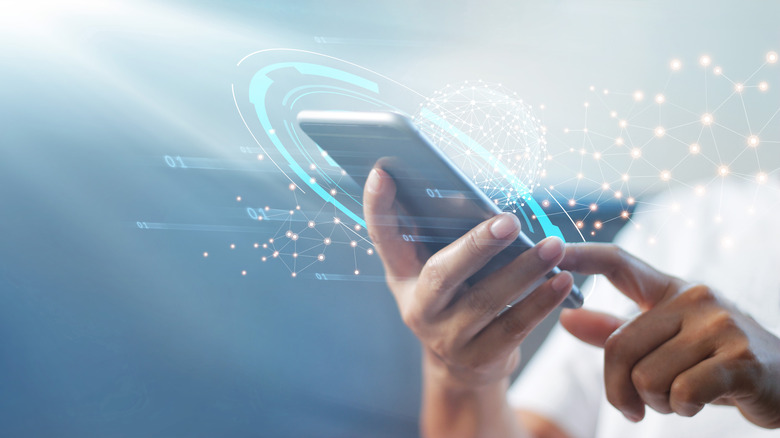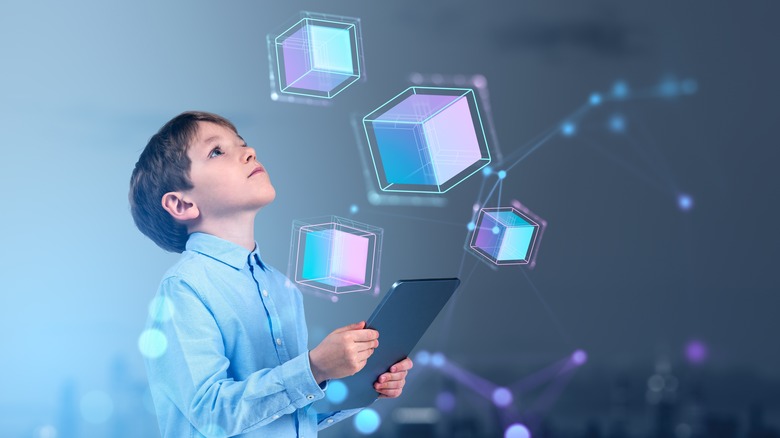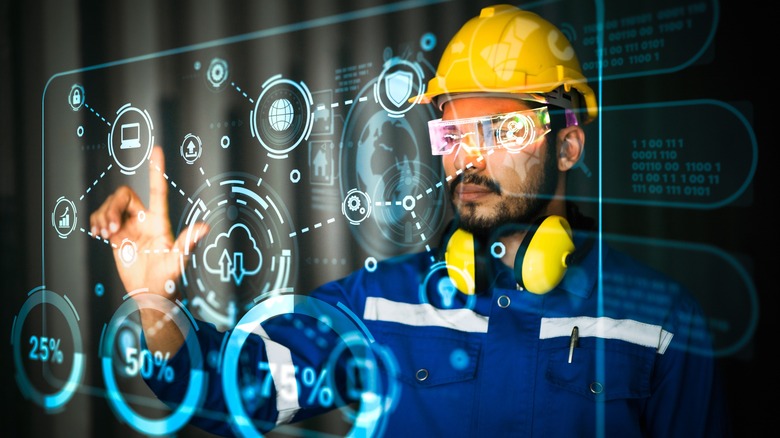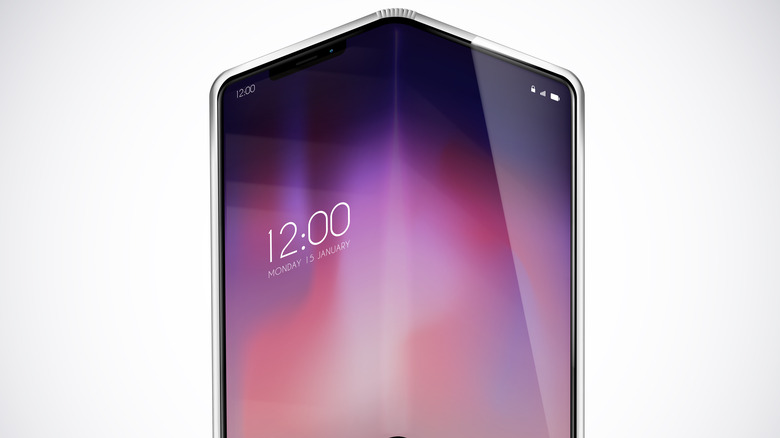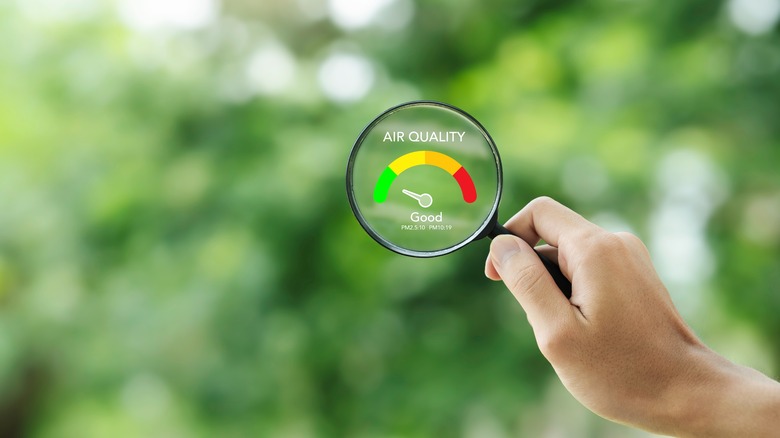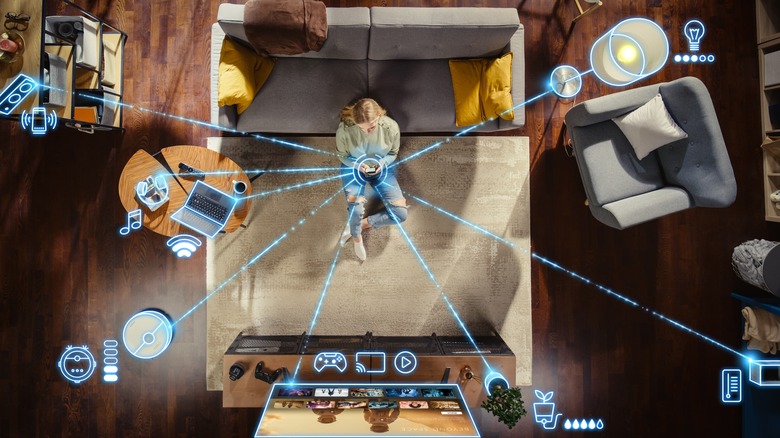5 Futuristic Smartphone Features That Would Be Gamechangers
Since cellular phones first entered mass production in the early 1970s, these magical little bricks have become one of the cornerstones of modern culture. Not only that, but cell phones, followed by smartphones, have made so many fascinating advancements in such a relatively short period of time. Just a few decades ago, it took everything a phone had just to make one call. Today, smartphones help us listen to music, take pictures, watch movies, and play games, not to mention all the various implementations of AI we're starting to see.
Considering how quickly smartphones have advanced, it's only natural to speculate about what's next. Maybe not every "Star Trek"-like dream we have for our smartphones will end up coming true, but a lot of the features we currently take for granted today were considered magical sci-fi not long ago. Sure, we probably aren't getting teleporters anytime soon, but there are a few features that might not be as far off as you think.
Holographic projection and scanning
If there were one concept that could be considered foundational in all science-fiction settings, it would be holograms. We already have video calling on our phones, so we can see our friends and family whenever we want, but what if we could see them in a more true-to-life fashion? Sci-fi mainstays like "Star Wars," "Star Trek," and "The Expanse" feature many holographic projections of both objects and people. Back here in the real world, holographic projection technology has come a long way, to the point that it's even used for fun things like virtual music shows these days. Perhaps some kind of holographic emitter could be fitted to a smartphone, either directly or with a peripheral.
Of course, in addition to projection, this kind of technology would necessitate accurate dimensional scanning to replicate appearance and movement. Fortunately, both face and motion recognition technology are on the right track, and built into many high-end tech devices today, powering features like Google's camera-powered search app, Google Lens, which already has many uses for your phone. In a perfect world, you could get a complete, detailed scan of any physical object with just a quick light show from your phone, then freely manipulate a hologram of it to your particular preferences. You could also record a little video of yourself doing a TikTok dance and make it dance on the dinner table to annoy your parents. Don't pretend it wouldn't be funny.
Smart motion recognition
Motion control was all the rage in the tech world back in the mid-2000s, in part because of the massive success of Nintendo's Wii video game console and its movement-sensing controllers. While much of the gaming world has lost interest in motion controls, the tech industry has held on, and been integrating it in many devices including VR headsets and smartphones. Most current smartphones contain at least a basic accelerometer, able to detect the device's vertical and horizontal orientation and simple shaking. What if smartphones could recognize a broader, subtler scope of movement, though?
What if, for example, you could wave your phone through the air to produce musical tones? What if you could aim your phone at another phone or device and casually swipe up on the screen to beam it as a direct message or link? Much like holograms, the concept of motion control has roots in classic science fiction, with characters deftly waving their fingers through the air to control their devices. Back here in the modern world, we have devices like laser-projected keyboards, so imagine if you could simulate an entire system, with your phone's sensors and cameras understanding all your actions.
In its ideal form, this notion could let us perform all kinds of tasks with only the most minute of gestures. With a snap of your fingers, you could record a video on your phone's camera, then fire it off to your friends and family with a little finger-gun motion.
Expanding and collapsing
One of the more noteworthy smartphone tech advancements in the last few years was the advent of foldable phones. The idea that you could take what is effectively a tablet, and fold it in half without damaging the screen was quite a game changer. Today's foldables tend to have a single-hinge design, but why stop there? What if you could fold an entire laptop down to a pocket-sized brick?
Of course, the practical benefits of a multi-hinged folding phone would be immediate. Imagine if you could fold the screen around your arm, so you could wear a smartphone like a watch. Or maybe being able to unfold and expand your phone out into a larger screen if you want to watch a movie. Maybe you could fold a digital artist tablet into a device that comfortably fits in your pocket. To make this technology work, we'd need to expand the capabilities of advanced circuitry so that it could more easily expand and collapse to solve these space problems. But the result could completely change how we think of computers and screens.
Who knows, if we push it far enough, we could even have personal devices that could freely grow and shrink as necessary, popping out from a little pill-sized device into a full-scale screen at a moment's notice. Some companies are already developing the bones of such a concept, like the rollable screen that Tecno unveiled at the 2024 Mobile World Congress.
Atmospheric detection and monitoring
As global climate change shifts the impacts of the seasons in new, often unpleasant directions, air quality has become a growing concern. Whether you live in an area subject to industrial smog or can't leave the house due to a particularly intense allergy season, it's becoming increasingly important to have a round-the-clock grasp of your immediate atmospheric conditions. There are already good air quality monitoring apps available for download like IQAir and AIRNow, but these rely on aggregated reports and constant internet connections, meaning they may not have up-to-date accuracy on your particular location.
The next best option would be if your phone itself could detect notable changes in the local atmosphere, including air quality, temperature, humidity, and more. Amazon already sells air quality monitors designed for individual rooms in your home, so it would just be a matter of either building that tech right into your phone or transmitting its data to your smartphone. The best version of this would be an air quality sensor that you don't need a wireless signal to work. Either way, being able to check your phone for a comprehensive update on the world around you can be really useful.
If we could get this technology working, why stop at atmospheric conditions? With the power of detection, not to mention holographic scanning, your phone could be one step removed from a "Star Trek" Tricorder, able to scan human bodies for anomalies or discern the makeup of minerals at a glance.
Ambient computing and tracking
Do you know what one of the most convenient kinds of devices is? One you don't have to be consciously aware of. Our phones can already handle a good chunk of our daily tasks, from setting reminders to ordering take-out, but most of these tasks need to be manually set up, either through keyboard inputs or direct voice commands. What if your phone could be a true digital assistant, not just in the metaphorical sense like a PDA, but in the literal one? Your phone could serve as a repository of all of your preferences and needs, not just for things like advertising, but for practical purposes.
Imagine if, thanks to the phone in your pocket, you could take a seat in a movie theater and have it automatically recline to your exact specifications. What if the moment you step through the front door after work, your phone interfaces with your home IoT system to pre-heat a bath or turn on your favorite show on the TV? How about if, the moment you sit down to dinner and prepare to open your favorite social media app, it's already open and waiting for you? Through machine learning and context-sensitive prompts, your phone could be two steps ahead of you throughout your entire daily routine.
Some personal assistants try to make this a possibility, but we want them to go further to integrate as much contextual information as possible and serve up what we want when we typically want it. It removes a barrier from using your phone if you don't have to actually open apps to take action. Rather, your phone anticipates and services your needs.
